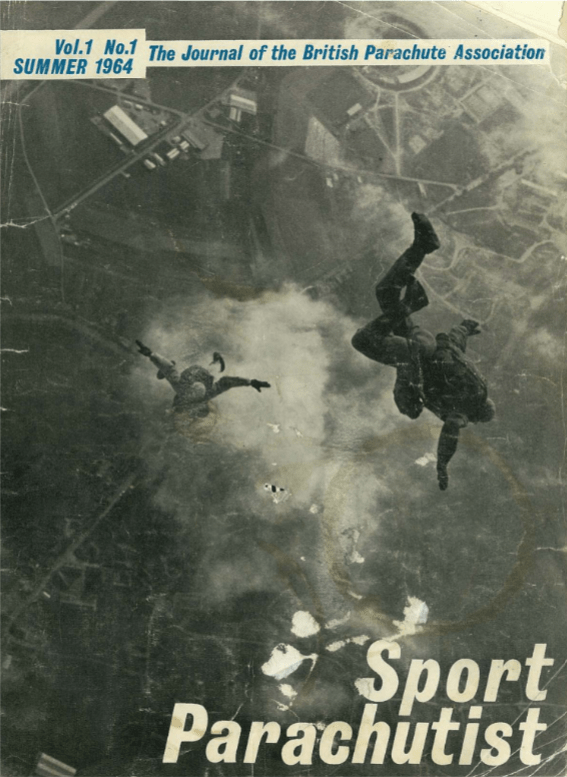A nostalgic look back into our archives with an article from the 1964 Summer edition of Sport Parachutist with Pete Denley, from the School of Sport Parachuting in Kidlington, Oxon looking at the costs.
Until such time as the student parachutist decides to take up parachuting seriously, there is no need for him to buy any gear, let alone the parachutes. Most clubs and training centres hold a number of these to hire out to trainees, as well as helmets, overalls and boots.
But the wise student will bring his own boots, and then all he requires is the will to jump. As far as training fees are concerned, the different training establishments vary, but a fair estimate would be as follows:
- Basic fee: £6 (This includes the legally required third party liability insurance.)
- Initial descents: 30s. each jump. (This includes the hire of aircraft and parachutes, etc.)
As the student progresses through training, his delayed falls increase in duration and naturally the aircraft charges will increase slightly. Under the present standard and progressions recommended by the British Parachute Association, the student, with adaptability can expect to carry out about 25 jumps before he will be considered eligible by his instructor for a full licence. An estimate of the total cost incurred to reach this standard is about £45 in all.
The cost can be minimised by a course of about two weeks. This will enable the student to reach the necessary standard in a shorter total time, by virtue of the continuity of the training. For example, the student who completes twenty descents during a two-week period will perform far better than his counterpart who carried out a similar number of descents on odd days scattered over a period of several months. Hence he will reach the required standard of a full licence holder long before the casual caller.
Besides this, the student who undergoes a continuous period of training gains confidence in his own performance far more quickly if his initial descents follow each other in quick succession. Confidence is a vital ingredient if the tyro is to become a top-rate performer. With this basic training and the requisite number of descents under his feet, the student will find that a week-end practice will be sufficient to better his performance and will rapidly become a safe, confident sport parachutist. Anyone of either sex, who is medically fit, has normal co-ordination and common sense, coupled with the ability to adapt .to a new environment and just a little courage, is ideally suited to become an exponent of this exhilarating sport.
Parachuting is as safe as the individual makes it, and if the recommended procedure and safety regulations, all of which are laid down by the Committee of the British Parachute Association are adhered to, then the injury rate will be kept to a minimum.
 By Peter Denley, catch up with the Summer Issue of Sports Parachutist 1964
By Peter Denley, catch up with the Summer Issue of Sports Parachutist 1964



